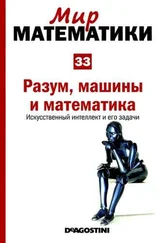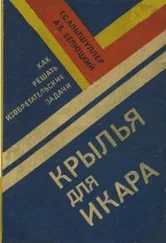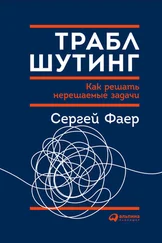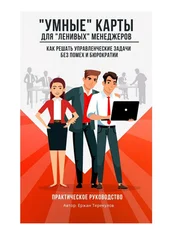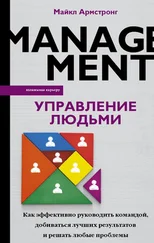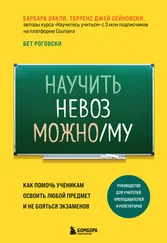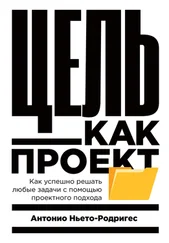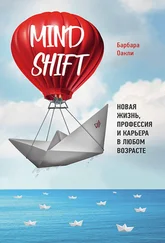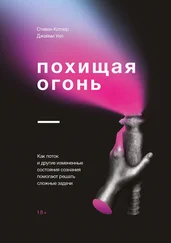Барбара Оакли - Думай как математик - Как решать любые задачи быстрее и эффективнее
Здесь есть возможность читать онлайн «Барбара Оакли - Думай как математик - Как решать любые задачи быстрее и эффективнее» — ознакомительный отрывок электронной книги совершенно бесплатно, а после прочтения отрывка купить полную версию. В некоторых случаях можно слушать аудио, скачать через торрент в формате fb2 и присутствует краткое содержание. Год выпуска: 2012, Жанр: Прочее, на русском языке. Описание произведения, (предисловие) а так же отзывы посетителей доступны на портале библиотеки ЛибКат.
- Название:Думай как математик: Как решать любые задачи быстрее и эффективнее
- Автор:
- Жанр:
- Год:2012
- ISBN:нет данных
- Рейтинг книги:4.67 / 5. Голосов: 3
-
Избранное:Добавить в избранное
- Отзывы:
-
Ваша оценка:
- 100
- 1
- 2
- 3
- 4
- 5
Думай как математик: Как решать любые задачи быстрее и эффективнее: краткое содержание, описание и аннотация
Предлагаем к чтению аннотацию, описание, краткое содержание или предисловие (зависит от того, что написал сам автор книги «Думай как математик: Как решать любые задачи быстрее и эффективнее»). Если вы не нашли необходимую информацию о книге — напишите в комментариях, мы постараемся отыскать её.
Думай как математик: Как решать любые задачи быстрее и эффективнее — читать онлайн ознакомительный отрывок
Ниже представлен текст книги, разбитый по страницам. Система сохранения места последней прочитанной страницы, позволяет с удобством читать онлайн бесплатно книгу «Думай как математик: Как решать любые задачи быстрее и эффективнее», без необходимости каждый раз заново искать на чём Вы остановились. Поставьте закладку, и сможете в любой момент перейти на страницу, на которой закончили чтение.
Интервал:
Закладка:
Лурия А. Р. Маленькая книжка о большой памяти. — М., 1968.
Фейнман Р., Лейтон Р., Сэндс М. Фейнмановские лекции по физике. Выпуск 2. Пространство. Время. Движение. — М.: Мир, 1965.
Фейнман Р. Вы, конечно, шутите, мистер Фейнман! — М.: АСТ, Астрель, 2011.
Фейнман Р. Не все ли равно, что думают другие? — М.: АСТ, 2014.
Феррис Т. Совершенное тело за 4 часа. — М.: Добрая книга, 2013.
Фоер Дж. Эйнштейн гуляет по Луне. Наука и искусство запоминания. — М.: Альпина Паблишер, 2013.
Фьоре Н. Легкий способ перестать откладывать дела на потом. — М.: Манн, Иванов и Фербер, 2013.
Эмметт Р. Книга для лентяя, или Как научиться не откладывать все на потом. — СПб.: Амфора, 2008.
Aaron, R., and R. H. Aaron. Improve Your Physics Grade. New York: Wiley, 1984.
Ainslie, G., and N. Haslam. “Self-control.” In Choice over Time, edited by G. Loewenstein and J. Elster, 177–212. New York: Russell Sage Foundation, 1992.
Amabile, T. M., et al. “Creativity under the gun.” Harvard Business Review 80, 8 (2002): 52.
Amidzic, O. et al. “Pattern of focaly-bursts in chess players.” Nature 412 (2001): 603–604.
Andrews-Hanna, J. R. “The brain’s default network and its adaptive role in internal mentation.” Neuroscientist 18, 3 (2012): 251–270.
Armstrong, J. S. “Natural learning in higher education.” In Encyclopedia of the Sciences of Learning, 2426–2433. New York: Springer, 2012.
Arum, R., and J. Roksa. Academically Adrift. Chicago: University of Chicago Press, 2010.
Baddeley, A., et al. Memory. New York: Psychology Press, 2009.
Baer, M., and G. R. Oldham. “The curvilinear relation between experienced creative time pressure and creativity: Moderating effects of openness to experience and support for creativity.” Journal of Applied Psychology 91, 4 (2006): 963–970.
Baumeister, R. F., and J. Tierney. Willpower. New York: Penguin, 2011.
Beilock, S. Choke. New York: Free Press, 2010.
Bengtsson, S. L., et al. “Extensive piano practicing has regionally specific effects on white matter development.” Nature Neuroscience 8, 9 (2005): 1148–1150.
Bilali, M., et al. “Does chess need intelligence? — A study with young chess players.” Intelligence 35, 5 (2007): 457–470.
Bilali, M., et al. “Why good thoughts block better ones: The mechanism of the pernicious Einstellung (set) effect.” Cognition 108, 3 (2008): 652–661.
Boice, R. Procrastination and Blocking. Westport, CT: Praeger, 1996.
Bouma, A. Lateral Asymmetries and Hemispheric Specialization. Rockland, MA: Swets & Zeitlinger, 1990.
Bransford, J. D, et al. How People Learn. Washington, DC: National Academies Press, 2000.
Brent, R., and R. M. Felder. “Learning by solving solved problems.” Chemical Engineering Education 46, 1 (2012): 29–30.
Brown, J. S., et al. “Situated cognition and the culture of learning.” Educational Researcher 18, 1 (1989): 32–42.
Burson K., et al. “Skilled or unskilled, but still unaware of it: how perceptions of difficulty drive miscalibration in relative comparisons.” Journal of Personality and Social Psychology 90, 1 (2006): 60–77.
Buzan, T. Use Your Perfect Memory. New York: Penguin, 1991.
Cai, Q., et al. “Complementary hemispheric specialization for language production and visuospatial attention.” PNAS 110, 4 (2013): E322—E330.
Cannon, D. F. Explorer of the Human Brain. New York: Schuman, 1949.
Carey, B. “Cognitive science meets pre-algebra.” New York Times, September 2, 2012; http://www.nytimes.com/2013/09/03/science/cognitive-science-meets-pre-algebra.html?ref=science.
Carpenter, S. K., et al. “Using spacing to enhance diverse forms of learning: Review of recent research and implications for instruction.” Educational Psychology Review 24, 3 (2012): 369–378.
Carson, S. H., et al. “Decreased latent inhibition is associated with increased creative achievement in high-functioning individuals.” Journal of Personality and Social Psychology 85, 3 (2003): 499–506.
Cassilhas, R. C., et al. “Spatial memory is improved by aerobic and resistance exercise through divergent molecular mechanisms.” Neuroscience 202 (2012): 309–17.
Cat, J. “On understanding: Maxwell on the methods of illustration and scientific metaphor.” Studies in History and Philosophy of Science Part B 32, 3 (2001): 395–441.
Charness, N., et al. “The role of deliberate practice in chess expertise.” Applied Cognitive Psychology 19, 2 (2005): 151–165.
Chase, W. G., and H. A. Simon. “Perception in chess.” Cognitive Psychology 4, 1 (1973): 55–81.
Chi, M. T. H., et al. “Categorization and representation of physics problems by experts and novices.” Cognitive Science 5, 2 (1981): 121–152.
Chiesa, A., and A. Serretti. “Mindfulness-based stress reduction for stress management in healthy people: A review and meta-analysis.” Journal of Alternative Complementary Medicine 15, 5 (2009): 593–600.
Cho, S., et al. “Hippocampal-prefrontal engagement and dynamic causal interactions in the maturation of children’s fact retrieval.” Journal of Cognitive Neuroscience 24, 9 (2012): 1849–1866.
Christman, S. D., et al. “Mixed-handed persons are more easily persuaded and are more gullible: Interhemispheric interaction and belief updating.” Laterality 13, 5 (2008): 403–426.
Chu, A., and J. N. Choi. “Rethinking procrastination: Positive effects of ‘active’ procrastination behavior on attitudes and performance.” Journal of Social Psychology 145, 3 (2005): 245–264.
Cook, N. D. Tone of Voice and Mind. Philadelphia: Benjamins, 2002.
Cook, N. D. “Toward a central dogma for psychology.” New Ideas in Psychology 7, 1 (1989): 1–18.
Cooper, G., and J. Sweller. “Effects of schema acquisition and rule automation on mathematical problem-solving transfer.” Journal of Educational Psychology 79, 4 (1987): 347.
Cowan, N. “The magical number 4 in short-term memory: A reconsideration of mental storage capacity.” Behavioral and Brain Sciences 24, 1 (2001): 87–114.
Cree, G. S., and K. McRae. “Analyzing the factors underlying the structure and computation of the meaning of chipmunk, cherry, chisel, cheese, and cello (and many other such concrete nouns).” Journal of Experimental Psychology: General 132, 2 (2003): 163–200.
Dali, S. Fifty Secrets of Magic Craftsmanship. New York: Dover, 1948 (reprint 1992).
DeFelipe, J. “Brain plasticity and mental processes: Cajal again.” Nature Reviews Neuro science 7, 10 (2006): 811–817.
DeFelipe, J. Cajal’s Butterflies of the Soul: Science and Art. New York: Oxford University Press, 2010.
DeFelipe, J. “Sesquicentenary of the birthday of Santiago Ramón y Cajal, the father of modern neuroscience.” Trends in Neurosciences 25, 9 (2002): 481–484.
Demaree, H., et al. “Brain lateralization of emotional processing: Historical roots and a future incorporating ‘dominance.’” Behavioral and Cognitive Neuroscience Reviews 4, 1 (2005): 3–20.
Derman, E. Models. Behaving. Badly. New York: Free Press, 2011.
Deslauriers, L., et al. “Improved learning in a large-enrollment physics class.” Science 332, 6031 (2011): 862–864.
Dijksterhuis, A., et al. “On making the right choice: The deliberation-without-attention effect.” Science 311, 5763 (2006): 1005–1007.
Читать дальшеИнтервал:
Закладка:
Похожие книги на «Думай как математик: Как решать любые задачи быстрее и эффективнее»
Представляем Вашему вниманию похожие книги на «Думай как математик: Как решать любые задачи быстрее и эффективнее» списком для выбора. Мы отобрали схожую по названию и смыслу литературу в надежде предоставить читателям больше вариантов отыскать новые, интересные, ещё непрочитанные произведения.
Обсуждение, отзывы о книге «Думай как математик: Как решать любые задачи быстрее и эффективнее» и просто собственные мнения читателей. Оставьте ваши комментарии, напишите, что Вы думаете о произведении, его смысле или главных героях. Укажите что конкретно понравилось, а что нет, и почему Вы так считаете.


